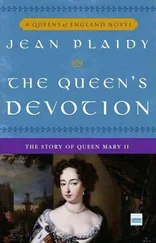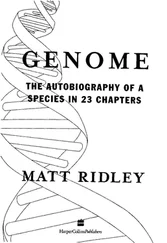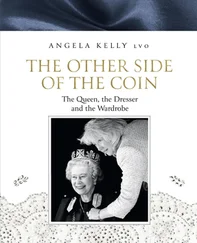The Queen - Matt Ridley
Здесь есть возможность читать онлайн «The Queen - Matt Ridley» весь текст электронной книги совершенно бесплатно (целиком полную версию без сокращений). В некоторых случаях можно слушать аудио, скачать через торрент в формате fb2 и присутствует краткое содержание. Жанр: Старинная литература, на английском языке. Описание произведения, (предисловие) а так же отзывы посетителей доступны на портале библиотеки ЛибКат.
- Название:Matt Ridley
- Автор:
- Жанр:
- Год:неизвестен
- ISBN:нет данных
- Рейтинг книги:4 / 5. Голосов: 1
-
Избранное:Добавить в избранное
- Отзывы:
-
Ваша оценка:
- 80
- 1
- 2
- 3
- 4
- 5
Matt Ridley: краткое содержание, описание и аннотация
Предлагаем к чтению аннотацию, описание, краткое содержание или предисловие (зависит от того, что написал сам автор книги «Matt Ridley»). Если вы не нашли необходимую информацию о книге — напишите в комментариях, мы постараемся отыскать её.
Matt Ridley — читать онлайн бесплатно полную книгу (весь текст) целиком
Ниже представлен текст книги, разбитый по страницам. Система сохранения места последней прочитанной страницы, позволяет с удобством читать онлайн бесплатно книгу «Matt Ridley», без необходимости каждый раз заново искать на чём Вы остановились. Поставьте закладку, и сможете в любой момент перейти на страницу, на которой закончили чтение.
Интервал:
Закладка:
So much is undisputed fact. What follows is entirely conjecture, and it was a conjecture that caused Low a good deal of sometimes vicious (and mostly foolish) criticism when she published the idea in 1987:
::: 160 :::
The Red Queen
Twenty-year-old women are in their breeding prime; therefore, the unusual pattern of fat distribution might be expected to be connected with getting a mate or bearing children. Standard explanations concern the bearing of children; for example, fat is inconvenient if it competes for space about the waist with a fetus.
Low 's explanation concerns the attraction of mates and takes the form of a Red Queen race between males and females. A man looking for a wife is likely to be descended from men who found two things attractive (among many others): big breasts, for feeding his children, and wide hips, for bearing them. Death during infancy due to a mother 's milk shortage would have been common before modern affluence—and still is in some parts of the world. Death of the mother and infant from a birth canal that was too narrow must also have been common. Birth complications are peculiarly frequent in humans for the obvious reason that the head size of a baby at birth has been increasing quickly in the past 5 million years. The only way birth canals kept pace (before Julius Caesar 's mother was cut open) was through the selective death of narrow-hipped women.
Grant, then, that early men may have preferred women with relatively wide hips and large breasts. That still does not explain the gaining of fat on breasts and hips; fat breasts do not produce more milk than lean ones, and fat hips are no farther apart than lean ones of the same bone structure. Low thinks women who gained fat in those places may have deceived men into thinking they had milkful breasts and wide hip bones: Men fell for it—
because the cost of distinguishing fat from heavy breasts or of distinguishing fat from wide hips was just too great, and the opportunity to do so was lacking. Men have counterattacked, evolutionarily speaking, by "demanding" small waists as proof of the fact that there is little subcutaneous fat, but women have easily overcome this by keeping waists slim even while gaining fat elsewhere."
Low ' s theory might not be right, as she is the first to admit, but it is no less logical or farfetched than any of its rivals, and for our purposes it serves to demonstrate that a Red Queen race between a dishonest advertiser (in this case, unusually, a THE PEACOCKS TALE
:::161 :::
female) and a receiverwho demands honesty may not always be won by the honesty-demanding gender. It is essential, if Low is right, that fat be cheaper to gain than mammary tissue, just as it is essential, for Dawkins and Guilford, that cheating be cheaper than telling the truth."
CHUCKING FROGS
The male 's goal is seduction: He is trying to manipulate the female into falling for his charms, to get inside her head and steer her mind his way: The evolutionary pressure is on him to perfect displays that make her well disposed toward him and sexually aroused so that he can be certain of mating: Male scorpions lull females into the mood for sex at great risk to their lives. One false step in the seduction, and the female 's mood changes so that she looks upon the male as a meal.
The evolutionary pressure on a female—assuming she benefits from choosing the best male—is to invent resistance to all but the most charming displays: To say this is merely to rephrase the whole argument of female choice with a greater emphasis on the how than the why. But such rephrasings can be illuminating, and this one has proved exceptionally so. Michael Ryan of the University of Texas rephrased the question a few years ago, and he did so partly because he studies frogs: It is easy to measure female preferences in frogs because the male sits in one spot and calls, and the female moves toward the sound of the male she likes the most: Ryan replaced the males with loudspeakers and offered each female different recordings of males to test her preference.
The male tungara frog attracts a female by making a long whine followed by a "chuck " noise. All of its close relatives except one make the whine but not the chuck: But at least one of the chuckless relatives turns out to prefer calls with chucks to those without. This was rather like discovering that a New Guinea tribesman found women in white wedding dresses more attractive than women dressed in tribal gear. It seems to indicate that the
::: 162 :::
The Red Queen
preference for the chuck just happens to exist in the fact that the female 's ear (to be precise, the basilar papillae of the inner ear) is tuned to the chuck 's frequency; the male has, in evolutionary terms, discovered and exploited this. In Ryan 's mind this deals a blow to the whole house of female-choice theory: That theory, whether in Fisher 's sexy-son form or the Good-genes form, predicts that the male's ornament and the female 's preference for such an ornament will evolve together: Ryan's result seems to suggest that the preference existed fully formed before the male ever had the ornament: Peahens preferred eyed tails a million years ago when peacocks still looked like big chickens. 66
Lest the tungara frog be thought a fluke, a colleague of Ryan's, Alexandra Basolo, has found exactly the same thing in afish called the platyfish. Females prefer males who have had long sword-shaped extensions stuck onto their tales: Males of a different species called the swordtail have such swords on their tails, yet none of the platyfish 's other relatives have swords, and it stretches belief to argue that they all got rid of the sword rather than that the swordtail acquired it: The preference for sworded tails was there, latent, in platyfish before there were swords."
In one sense what Ryan is saying is unremarkable. That male displays should be suited to the sensory systems of females is only to be expected: Monkeys and apes are the only mammals with good color vision: Therefore, it is not surprising that they are the only mammals decorated with bright colors such as blue and pink.
Likewise, it is hardly remarkable that snakes, which are deaf, do not sing to each other. (They hiss to scare hearing creatures:) Indeed, one could list a whole panoply of "peacocks ' tails" for each of the five senses and more: the peacock 's tail for vision, the nightingale's song for hearing, the scent of the musk deer for smell;" the pheromones of the moth for taste; the "morphological exuberance "
of some insect "penises " for touch; 69even the elaborate electrical courtship signals of some electric fish" for a sixth sense. Each species chooses to exploit the senses that its females are best at detecting. This is, in a sense, to return to Darwin 's original idea: that females have aesthetic senses, for whatever reason, and that those senses shape male ornaments."
THE PEACOCK ' S TALE
:::163 :::
Moreover, you would expect the males to pick the method of display that is least dangerous or costly. Those that did so would last longer and leave more descendants than those that did not. As every bird-watcher knows, the beauty of a bird 's song is inversely correlated with the colorfulness of its plumage. The oper-atic male nightingales, warblers, and larks are brown and usually almost indistinguishable from their females. Birds of paradise and pheasants (in which the males are gorgeous, the females dull) are monotonous, simple songsters given to uninspired squawks.
Intriguingly, the same pattern holds among the bowerbirds of New Guinea and Australia: The duller the bird, the more elaborate and decorated its bower. What this suggests is that nightingales and bowerbirds have transferred their color to their songs and bowers.
Читать дальшеИнтервал:
Закладка:
Похожие книги на «Matt Ridley»
Представляем Вашему вниманию похожие книги на «Matt Ridley» списком для выбора. Мы отобрали схожую по названию и смыслу литературу в надежде предоставить читателям больше вариантов отыскать новые, интересные, ещё непрочитанные произведения.
Обсуждение, отзывы о книге «Matt Ridley» и просто собственные мнения читателей. Оставьте ваши комментарии, напишите, что Вы думаете о произведении, его смысле или главных героях. Укажите что конкретно понравилось, а что нет, и почему Вы так считаете.












